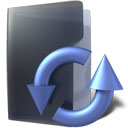Wir benötigen Ihre Einwilligung zur Verwendung der einzelnen Daten, damit Sie unter anderem Informationen zu Ihren Interessen einsehen können. Klicken Sie auf "OK", um Ihre Zustimmung zu erteilen.

API PUBL 4608-ed.1994
Evaluation of Sediment Toxicity Tests for Biomonitoring Programs
Name übersetzen
NORM herausgegeben am 1.11.1994
Informationen über die Norm:
Bezeichnung normen: API PUBL 4608-ed.1994
Ausgabedatum normen: 1.11.1994
SKU: NS-1139778
Zahl der Seiten: 37
Gewicht ca.: 111 g (0.24 Pfund)
Land: Amerikanische technische Norm
Kategorie: Technische Normen API
Die Annotation des Normtextes API PUBL 4608-ed.1994 :
API PUBL 4608, 1994 Edition, November 1994 - Evaluation of Sediment Toxicity Tests for Biomonitoring Programs
Reliable toxicity tests are currently available for testing of marine, estuarine, and freshwater sediments as part of biomonitoring programs for wastewater discharges. Sediment toxicity tests provide an integrated measure of the effects of sediment contamination that eliminates much of the uncertainty associated with predicting toxicity from sediment chemistry alone. When combined with surveys of animals living in the sediments, sediment toxicity tests can be used to assess existing conditions, rank sites for cleanup priority, and monitor changes in contaminant effects with time (Chapman et al. 1992). However, the use of inappropriate test methods or species and the failure to consider physical and chemical factors that can affect the results of the tests may diminish the value of biological toxicity testing (Burton 1991; Hill et al. 1993).
The purpose of this Users Guide is to provide information that will enable environmental personnel at petroleum facilities to select sediment toxicity tests and test methods that are scientifically valid and appropriate for a specific site. For those readers who are unfamiliar with sediment toxicity testing, this Users Guide explains general aspects of sediment toxicity testing and how to use available technical information. This document also outlines the technical requirements and appropriate conditions for using different sediment toxicity test methods. A companion document, Evaluation of Sediment Toxicity Tests for Biomonitoring Programs (PTI, 1994) hereafter referred to as the Technical Resource Document, has been prepared to provide technical background on the test methods and the detailed rationale for the evaluations presented here. The Technical Resource Document is intended to be used as a reference tool for the test selection process and also as an information resource to support negotiations with agencies concerning the appropriateness of any recommended tests.
Sediment toxicity tests anticipated for future use in biomonitoring programs for National Pollutant Discharge Elimination System (NPDES) permit compliance are addressed in the Technical Resource Document and in this Users Guide. These documents were developed for use by petroleum industry operations (refineries, marketing terminals, and production facilities) that have discharges to surface waters. However, the Technical Resource Document and this Users Guide contain information that is applicable to other industries and could be used by any wastewater discharger.
The term sediment toxicity test, as used here, refers to any laboratory method that measures the adverse biological response of a group of organisms to a sample of test sediment. Some sediment toxicity tests measure lethal effects by determining the number of organisms that are killed during the exposure period. Other tests measure sublethal effects such as developmental abnormalities in juvenile stages, inhibition of reproduction, or reduced growth. Sediment toxicity tests are used in many biomonitoring programs because they integrate the effects of multiple chemicals and can be used in conjunction with chemical measurements and surveys of sedimentdwelling organisms to establish cause- effect relationships. Sediment toxicity tests are also the primary tool for any toxicity identification and evaluation program. Sediment toxicity tests are available for many different species and various life stages of some species. For example, they may be conducted on embryos, larvae, and juveniles of various fish species, as well as embryos and juveniles of invertebrates such as clams, oysters, and sea urchins. Sediment toxicity tests can also be conducted with microscopic algae and bacteria, submerged aquatic plants (e. g., water hyacinth), and wetland plants (e. g., marsh grass).
The next section presents an evaluation of available sediment toxicity tests, including descriptions of habitat type, sediment test systems, and biological endpoints. The following section provides a procedure for selection of tests at a specific site. Finally, brief summaries of sampling and data analysis issues are presented in a section on application of sediment toxicity tests.
Selected terms in this Users Guide are defined in the Glossary.
Empfehlungen:
Aktualisierung der technischen Normen
Wollen Sie sich sicher sein, dass Sie nur die gültigen technischen Normen verwenden?
Wir bieten Ihnen eine Lösung, die Ihnen eine Monatsübersicht über die Aktualität der von Ihnen angewandten Normen sicher stellt.
Brauchen Sie mehr Informationen? Sehen Sie sich diese Seite an.



 Cookies
Cookies
